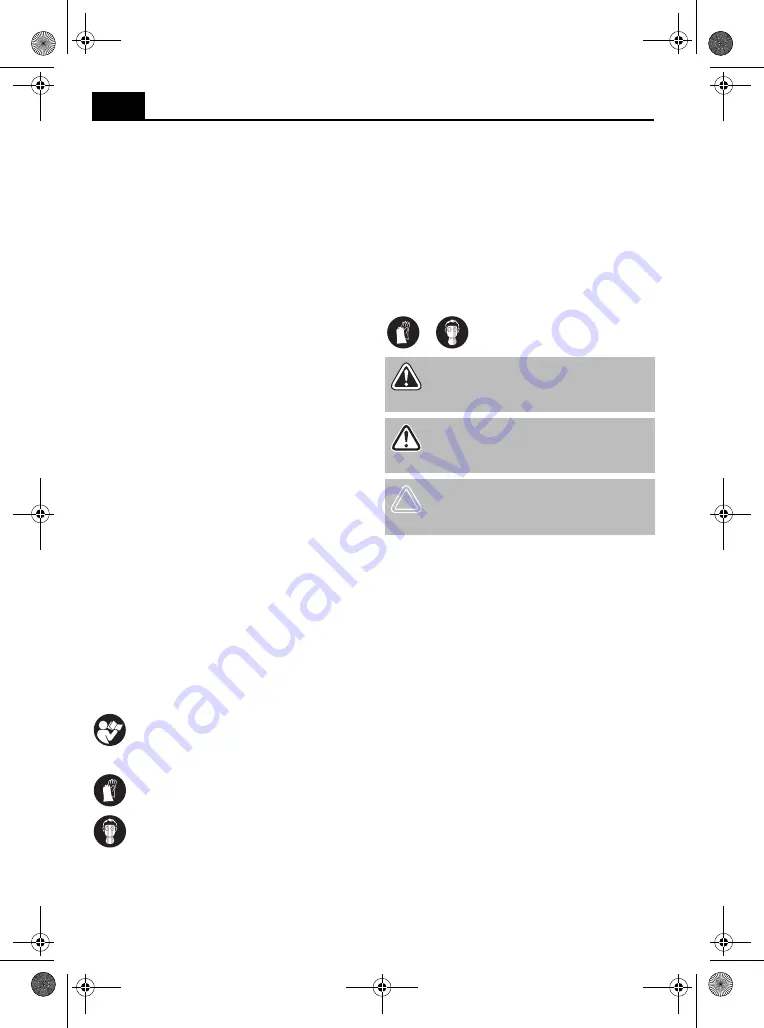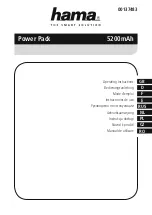
6
• If the power cable is damaged immediately dis-
connect the plug. Never use the device if the
power cable is damaged.
• If the device is not in use make sure the plug is
pulled out.
• Make sure that the device is switched off before
plugging in the mains cable.
• Make sure that the device is switched off before
unplugging it.
• Disconnect the power supply before transport-
ing the device.
Device-specific safety instructions
• Make sure the workplace is adequately venti-
lated. Residual gases and vapours can be harm-
ful to health.
• Do not operate the product in moist environ-
ments or allow it to become moist.
• Careless handling of the product increases the
risk of fire and explosion.
• Flammable and toxic gases can develop when
working with synthetics, paints, varnishes and
similar materials. Do not work in the proximity of
highly flammable gases or materials.
• Heat can reach flammable parts that are not vis-
ible.
• Do not use the product in the same position for
a long time.
• Risk of burns! Do not touch the hot nozzle. Wear
protective gloves.
• Never point the hot air current at persons or ani-
mals.
• Never use the product as a hair dryer or for dry-
ing clothing.
• Do not move the nozzle too close to the part to
be treated. The resultant build up of air can
cause the product to overheat.
• Do not block the air inlet openings.
• Let the product completely cool before storing.
The hot nozzle can cause damage and fires.
• Remember that moving parts may also be
located behind ventilation and venting slots.
• Symbols affixed to your tools may not be
removed or covered. Information on the device
that is no longer legible must be replaced imme-
diately.
Personal protective equipment
Your product at a glance
1.
Nozzle
2.
Air inlet openings
3.
Setting buttons for temperature
4.
Display
5.
Setting buttons for air flow
6.
On and Off switch
7.
Stand
8.
Air-blast nozzle
9.
Reducing nozzle
10. Reflector nozzle
Supplied as standard
• Instructions for use
• Hot air gun
• Cap nozzles (4×)
Operation
Potential applications
Removing paint and paint residues
– Heat up paint or residual paint on the surface to
be treated using the hot air gun and remove
using a suitable tool.
Dissolving adhesives
– Many adhesives can be softened using heat.
Joints can be separated or excess glue can be
removed in this way.
Soft soldering
– The product is suitable for spot soldering or sol-
dering pipes. The fusing temperature of the sol-
der must be below 400 °C.
Bonding and deforming synthetic materials
– Heat up synthetic materials by consistent see-
saw movements. Use suitable hot adhesives for
bonding.
Drying
– The product can be used for drying coats of
paints, binders and sealants.
Shrinking
– Select the shrink hose according to the work-
piece and heat up evenly using the hot air gun.
Thawing of water pipes
– Always heat up the frozen section from edge to
middle. Exercise extreme caution when heating
up plastic pipes and joints between pipe sec-
tions in order to prevent damage.
Read and observe the instructions for use
before using for the first time.
Wear fire-resistant protective gloves (pro-
tection against heat sources) when work-
ing with the product.
Wear a suitable respirator mask when
working with the product.
DANGER! Danger of death!
Water pipes
can sometimes be difficult to tell apart from
gas pipes. Under no circumstances may
gas pipes be heated.
WARNING! Health risk due to rising
vapours!
Wear an appropriate respirator
mask and make sure the workplace is ade-
quately ventilated.
NOTICE! Risk of damage!
An excessive
supply of heat can cause damage to the
workpiece. Perform a sample operation in a
safe place.
GB
Heissluftpistole_301452.book Seite 6 Mittwoch, 16. September 2015 2:10 14


































